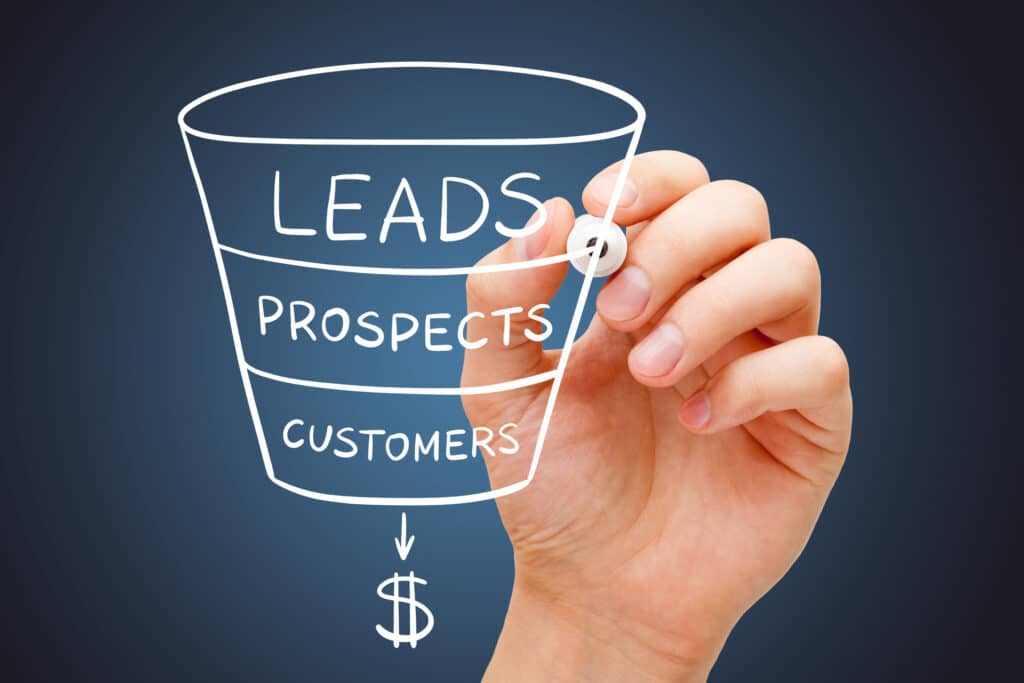Are you reaching out to a lead? A prospect? Maybe both? While these two words have a tendency to be used interchangeably, generalizing them can be confusing at best and misleading at worst. It’s important to note whether the person you’re contacting is a lead or prospect because of what either name signifies. Here’s what we mean.
Answering “Lead or Prospect?” Determines Where They Are in Your Pipeline
The main reason you need to know the difference between a lead and a prospect is that it helps distinguish where they are in the overall buying process. It gives you a better sense of organization, and allows your marketing department to accurately evaluate conversion rates and other metrics that indicate whether your sales team is getting enough conversations for them to meet their goals.
So What’s the Difference?
A lead is someone who knows about your company and has shown a level of interest in your product or service — but they haven’t been qualified by your team.
A prospect is a lead who has been qualified and is viewed as likely to close.
Leads are refined through your marketing efforts. Those that engage with your content can be viewed as marketing-qualified leads (MQLs), who then enter your normal sales process of sales-qualified leads (SQLs) to prospects to opportunities.
Do These Names Really Matter?
Using the correct terminology will let your management know how well your teams are performing. Marketing will need to reach a specific number of verified contacts to generate enough qualified leads for your sales reps to follow-up with. That in turn tells you how many prospects are likely to close and how that will affect your revenue.
Where Do You Find Leads?
Leads can be considered inbound or outbound, depending on how they learn about your company.
An inbound lead is someone who has clicked through to your website, either from a browser search, pay-per-click (PPC) ad, or your social media accounts. Once there, they may choose to request more information from you, schedule a meeting, or download a lead magnet that you’ve posted to obtain their contact information. Inbound lead generation benefits from search engine optimization (SEO), an active social media presence, content management, and — depending on whether it fits your budget — a strong PPC strategy.
An outbound lead is someone who your marketing team has contacted in order to: a) learn if they are the right person to discuss new business opportunities; b) touch on pain points they may be experiencing; and c) share industry knowledge to earn their trust. While there are still some who do this through cold calling, email has become the preferred method of outbound marketing and depends on accurate email lists. These can be obtained from data aggregate sources, trade shows, or automation that can verify email addresses for you.
It’s worth noting that email shouldn’t be viewed as an order-taking service to buy your product. It requires time to warm leads up to the point that your sales reps can further qualify them as prospects.
What’s the Process for a Lead to Become a Prospect?
Generally speaking, you turn a lead to a prospect through the following qualification process, courtesy of HubSpot:
Organization-Level Qualification, where you confirm if the lead has the traits matching your ideal customer profile (or buyer persona) and is a good fit for new business.
Opportunity-Level Qualification, where you confirm if the company that the lead represents would benefit from, and be able to implement, your products and/or services.
Stakeholder-Level Qualification, where you confirm if the lead is the decision-maker for closing a deal, or whether others at their company need to be involved.
Tip: It’s a good idea to measure how long it takes for your leads to become prospects. This allows you to gauge a rough percentage of the verified leads who you’ll need to contact who you can then anticipate will become prospects in your normal sales process.
Lead or Prospect — Do You Know How Many You Have?
If you have questions about the material we’ve covered, or you’d like further guidance on how to develop more sales leads, we want to hear from you. Marketing Armor offers inbound and outbound lead generation services that can grow your database of verified contacts, including:
- Email automation for validating email addresses of potential customers.
- Social media management.
- Content curation for your emails and website, including blog posts, lead magnets, and more.
- Website development.
- Pay-per-click advertising.
Click the link below to schedule a free consultation to learn more.





